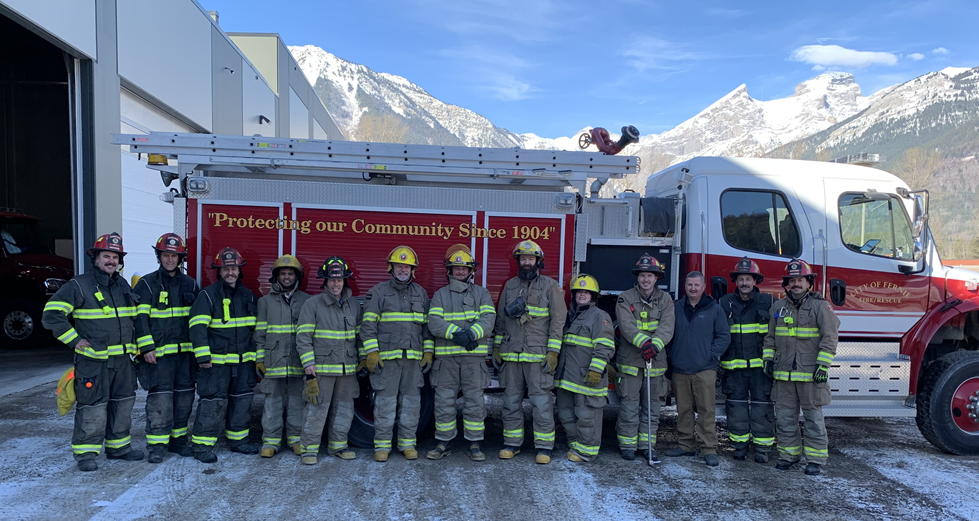Development Variance Permits
A Development Variance Permit (DVP) is a permit required to vary the regulation of a number of City bylaws. These variances may alter regulations such as building setbacks from a lot line, or building height restrictions, and can apply to the following:
- Zoning regulations
- Parking
- Signage
- Subdivision servicing
- Other regulatory bylaws
A DVP cannot vary the use or density of land or floodplain specifications permitted in the applicable bylaw, pursuant to the Local Government Act.
If a proposal relates to permitted uses or the density of a property, the applicant may consider submitting an OCP or Zoning Amendment Application.
Further, if a proposal includes floodplain specifications, the applicant may consider submitting a letter to the Corporate Officer requesting an exemption to the Floodplain Management Bylaw, which must be granted through a resolution of City of Fernie Council.
How can I apply for a Development Variance Permit?
If your project requires a Development Variance Permit, please complete an application form and return it to City Hall with the fee payment and required supporting documents, as outlined on the checklist.
Development Variance Permit applications are assessed by City planning department staff, and may also be referred to other applicable City departments or external agencies for review.
Depending on the scope of the application, variance requests may fall into one of two categories - a Minor Variance or a Major Variance.
Minor Variances are reviewed by City staff. Complete applications may take a minimum of 1-2 weeks to process.
Major Variances and first reviewed by City staff, then by Council at a minimum of two Regular Meetings of Council. Major Variance applications are subject to a ten-day public notice period, allowing the public to provide input prior to a final decision being made regarding the issuance of the permit. Complete applications may take a minimum of 6-8 weeks to process after a complete application is received. This timeline is determined by the schedule of regular council meetings, council meeting agenda availability, and the public notification process.
New Delegation Bylaw
On May 24, 2022 Council adopted a new Delegation Bylaw that gives staff the authority to approve a specific set of minor variances. This new process aims to drastically reduce the amount of time spent processing applications, and subsequently reduce wait times for the issuance of permits.
Read more about the process change in our news archives.
Application Process
1. Submit Application
Review the application requirements, gather necessary supporting documents. Submit your complete application form and application fee to City Hall.
2. Application Review
The Planning department reviews your application, determines if the request is a Minor Variance (issued by Staff) or a Major Variance (issued by Council). Further information about the project may be requested from the applicant, if required.
All Minor Variance applications are processed and may be approved by the Planning Department, per the Delegation Bylaw.
A Minor Variance is defined as:
- Setback: (Minimum 1.5m from property line)
E.G. If the zoning bylaw states that a building or structure must be set back 6 m from the property line, staff can entertain a variance for a structure set back as close as 1.5 m from the property line.
- Height: (Maximum 10% increase)
E.G. If the zoning bylaw states that a building can be 10 metres high, staff can entertain a variance for a building that is up to 11 metres high.
- Parcel Coverage: (Maximum 10% over allowable)
E.G. If the zoning bylaw states that parcel coverage is 40%, staff can entertain a variance of up to 44% parcel coverage.
- Projections: All considered.
Projections include objects such as eaves, decks, balconies, and steps. Variances for these items can be considered up to the property line.
- Parking: (Maximum 50% decrease of required off-street parking spaces).
E.G. If the zoning bylaw states that four off-street parking spaces are required, staff may consider a variance of no less than two off-street parking spaces.
A Major Variance is defined as:
- Any Development Variance Request falling outside of the definition of a “Minor” variance.
- Permits associated with Minor applications may be issued by staff, whereas permits associated with Major Applications are subject to the approval of City Council.
3. Statutory Notification Process (Major Variance only)
The Planning Team prepares a report to inform Council that the City will begin the statutory notification process. Neighbouring properties are informed of your application by mail and hand delivery.
4. Council Meeting (Major Variance only)
The Planning team prepares a second report for Council requesting the approval of the application. Property owners within your neighbourhood have an opportunity to express their concerns in writing prior to the Council Meeting, as specified on the notice.
5. DVP Issuance and Land Title Office Registration
Upon approval of staff or council, a DVP is issued to the applicant. A Notice of Permit is registered with Land Titles.
How long does it take to process my application?
Minor Variance: a minimum of 2-3 weeks from the time a complete application is received.
Major Variance: a minimum of 6-8 weeks from the time a complete application is received. These applications take longer to complete due to the public notification process and requirement for council to consider the applications at regularly scheduled meetings.
What to include in a Development Variance Permit application
As every property and variance request is unique, application requirements can vary. The minimum requirements for an application include:
- A completed DVP Application form
- Fee payment
- A Title Certificate for the property
- A summary of the project, including justification for the Development Variance Permit
- A property location certificate / survey (if applicable)
- Plan drawings of the proposed works associated with the Development Variance Permit (if applicable)
Once complete, submit your application form to City Hall and pay the applicable fee.
If you have any questions about your application, contact the Planning department at planning@fernie.ca
Does Your Project Need An Architect?
The Architects Regulation defines which buildings in British Columbia require the services of an Architect by law. An Architect must be retained any time architectural services (including at the planning and design phase) are provided on a building requiring an Architect under the Architects Regulation.
If your project needs an architect, the City requires the architect to be involved throughout the Development Permit, Development Variance Permit, and Building Permit application phases, providing sealed design drawings with permit application submissions.
Refer to the Architectural Institute of BC’s (AIBC) explanatory guide to understand if an architect needs to be engaged on your project:
If you have questions about whether your project requires an architect, visit the AIBC Practice Advice information page, or contact an AIBC Practice Advisor at practiceadvice@aibc.ca
What is the cost of the application?
- Development Variance Permit Application Fee - $500
- Applying in conjunction with a Development Permit (Hazards Lands and/or Development Permit) - $200
Multiple variance requests for the same property may be included in a single application.
Contact Us
Planning Department
- Email: planning@fernie.ca
- Phone: 250-423-6817 – option 3




.png)